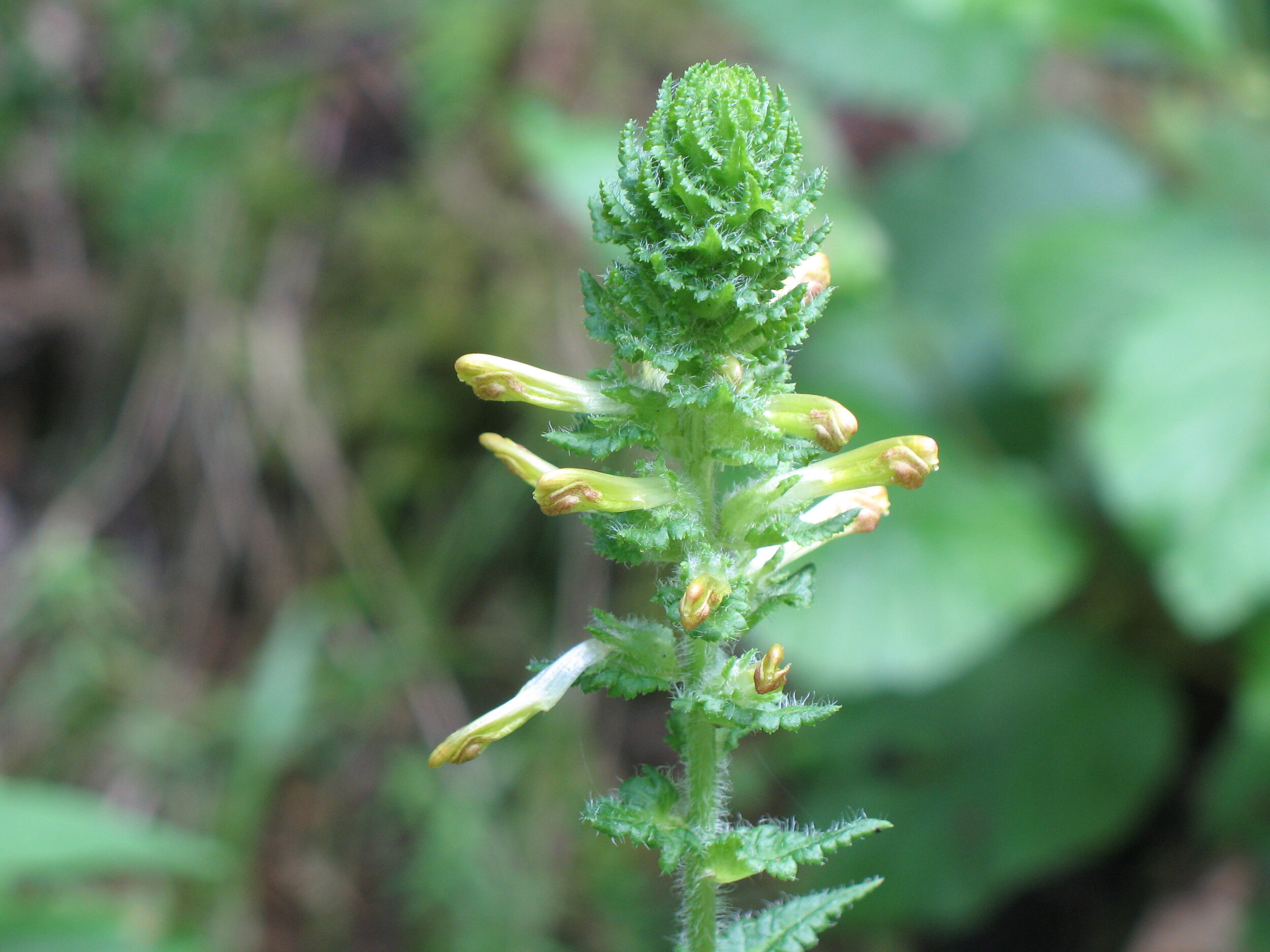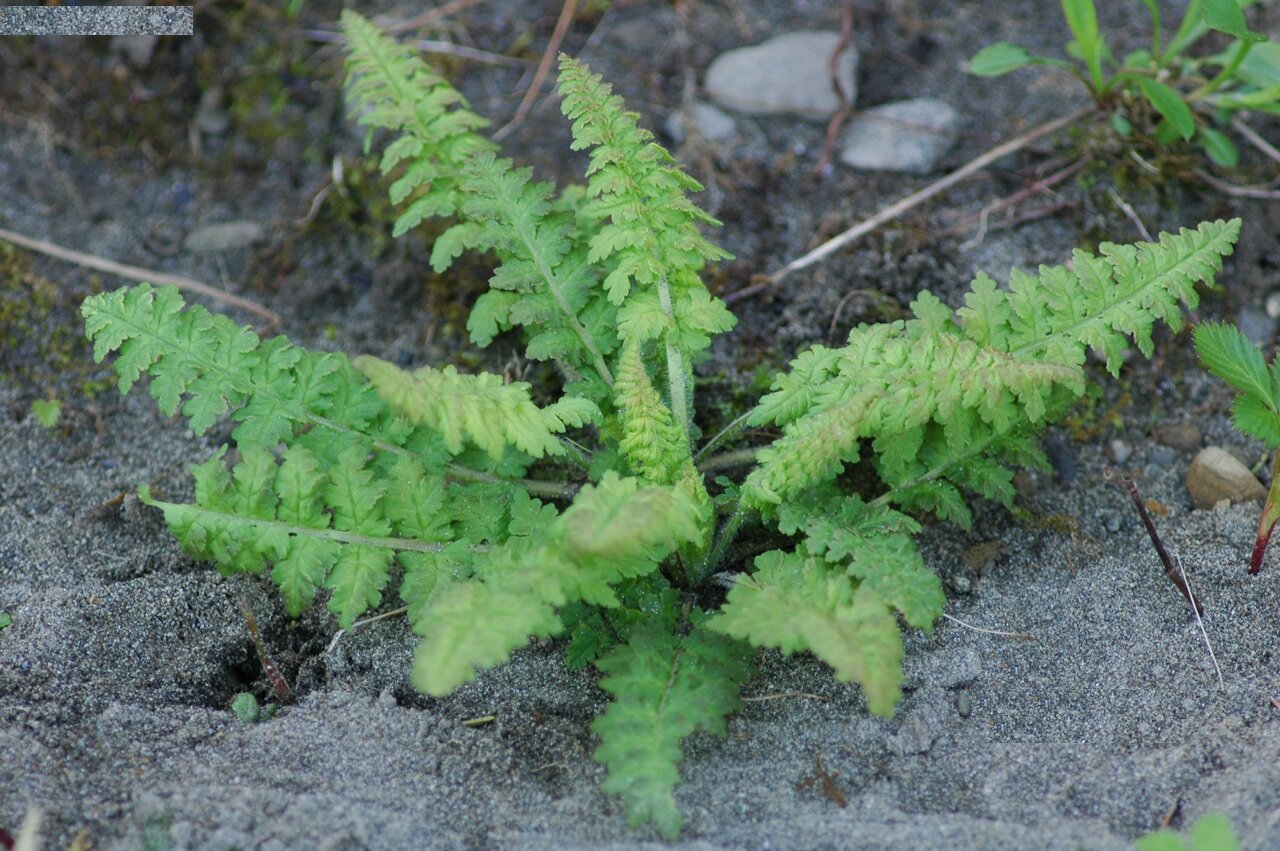(Pedicularis furbishiae)
Status: Endangered
This means that without some form of action, they could disappear from Canada or the entire planet.
Identification guide:
In spring, look for a simple cluster of small, fern-like leaves.
In mid-summer, look for small clusters of flowers at the tip of hairy, reddish stems or branches up to 3/4m tall.
Small scattered yellow flowers sprouting from the green egg-shaped cluster.
Habitat
Furbish’s lousewort (Pedicularis furbishiae) is found nowhere else in the world except along the Wolastoq/Saint John River in New Brunswick and Maine. Once thought to be extinct, its total Canadian population consists of a handful of sites in New Brunswick, where it numbers less than 1000 plants.
In New Brunswick, this globally rare plant is found along one of the most intact sections of the Wolastoq/Saint John River between Grand Falls and Perth-Andover, where it is tied to the natural dynamics of the river. The plant favours steep, damp, well-shaded banks and eroded or slumping shorelines that are dominated by shrubs. These areas are often created by ice-scouring and spring flooding that clear away competing vegetation, enabling the lousewort to exist in small populations. Furbish’s lousewort flowers from mid-July to late August, with only a few flowers blooming at a time.
Threats
The biggest threat to the survival of furbish’s lousewort is habitat degradation. This is often linked to the removal of shoreline shrubs and shade trees down to the river’s edge, dumping and infilling over the riverbank, and permanent alteration of the natural shoreline.
Ways You Can Help
On river front property, maintain natural shoreline vegetation and trees atop the riverbank. To create views, prune tree branches rather than removing them entirely.
The Nature Trust can help you find alternatives to infilling, excavating, and dumping trash along your shoreline.
You can prevent trampling sensitive plants throughout your shoreline by using a single trail to access the river.
This project was undertaken with the financial support of Environment Canada.
References: Furbish’s Lousewort Recovery Strategy 2010.
To find out more about Species at Risk conservation, contact our Conservation Manager, Carli Le Roux, below
or by calling (506) 457-2398.



